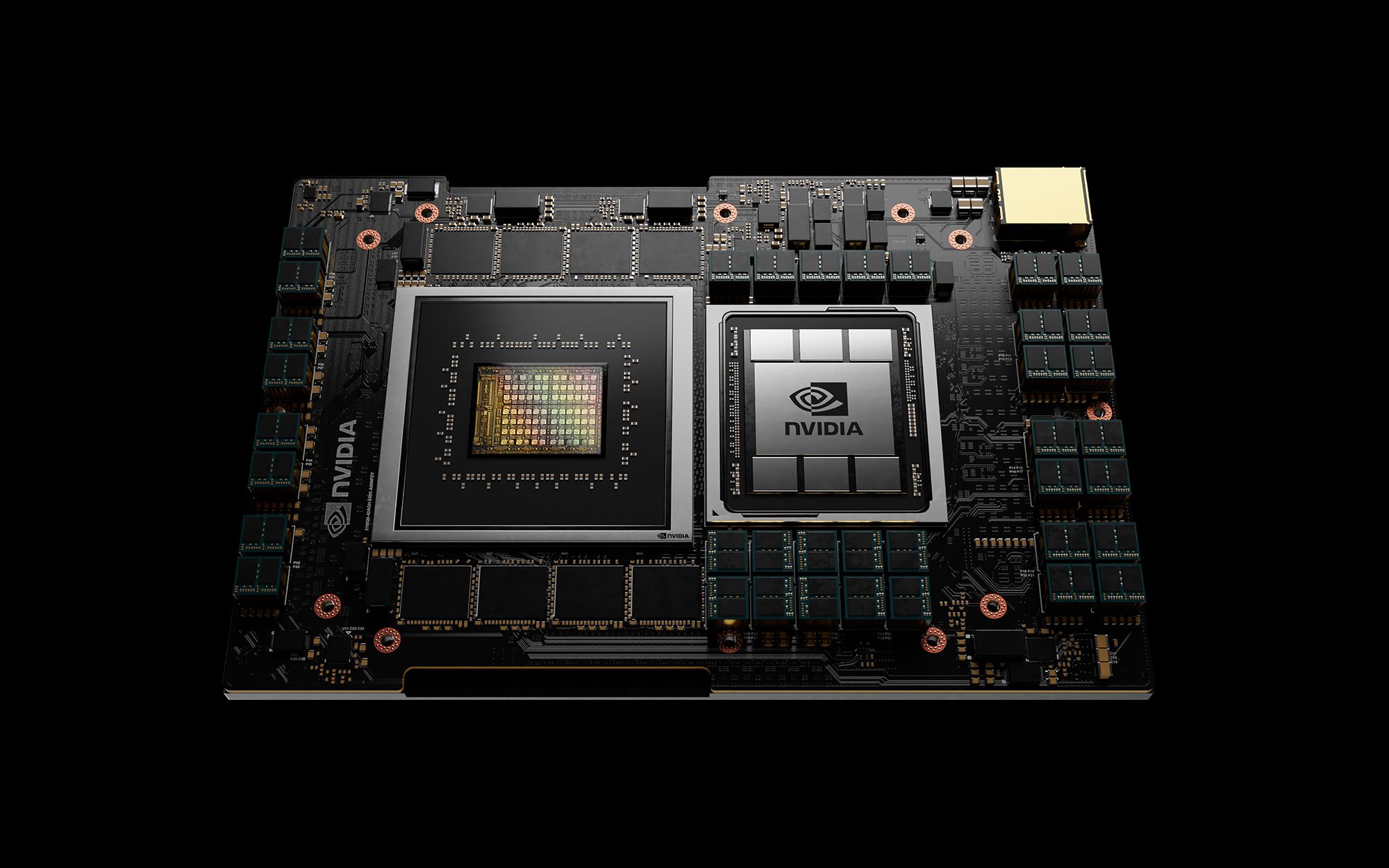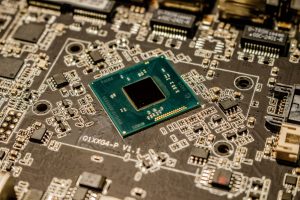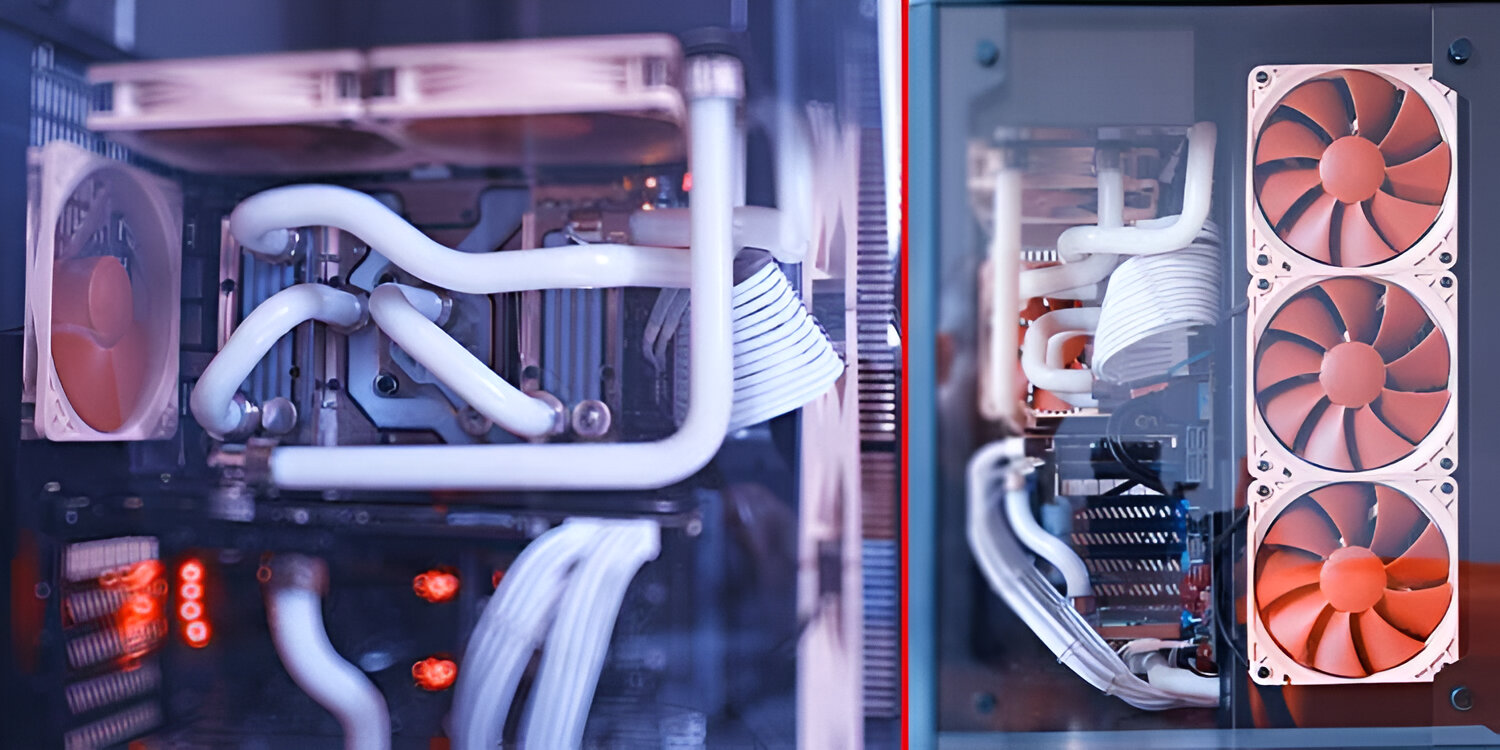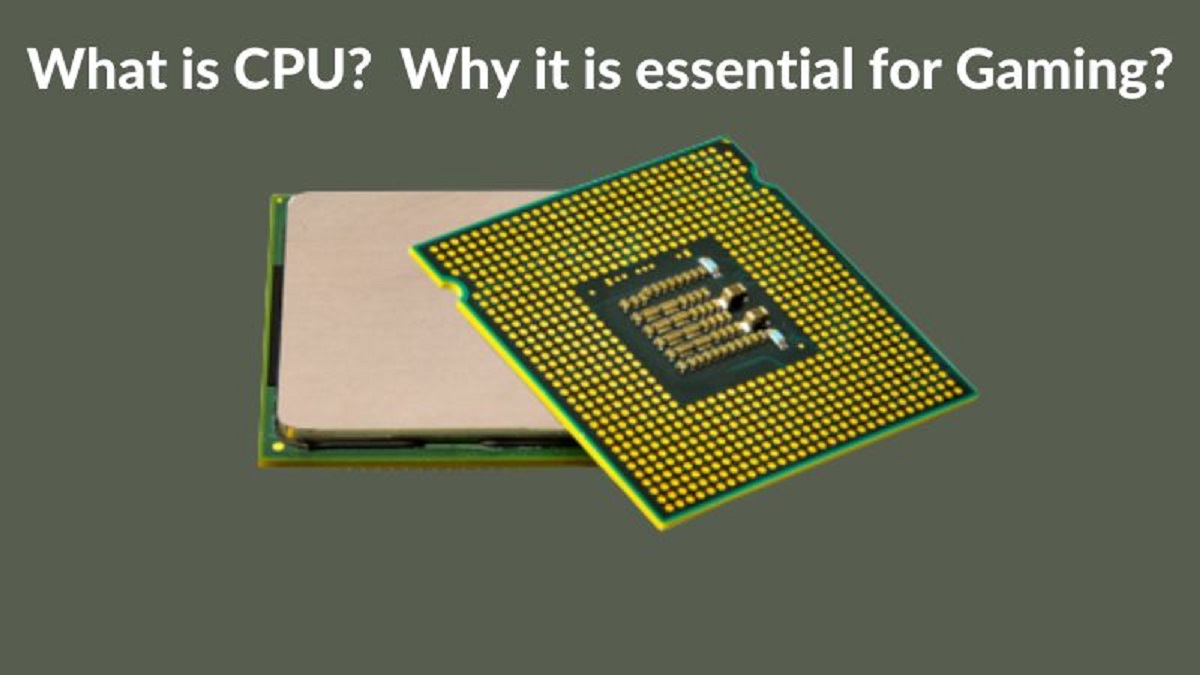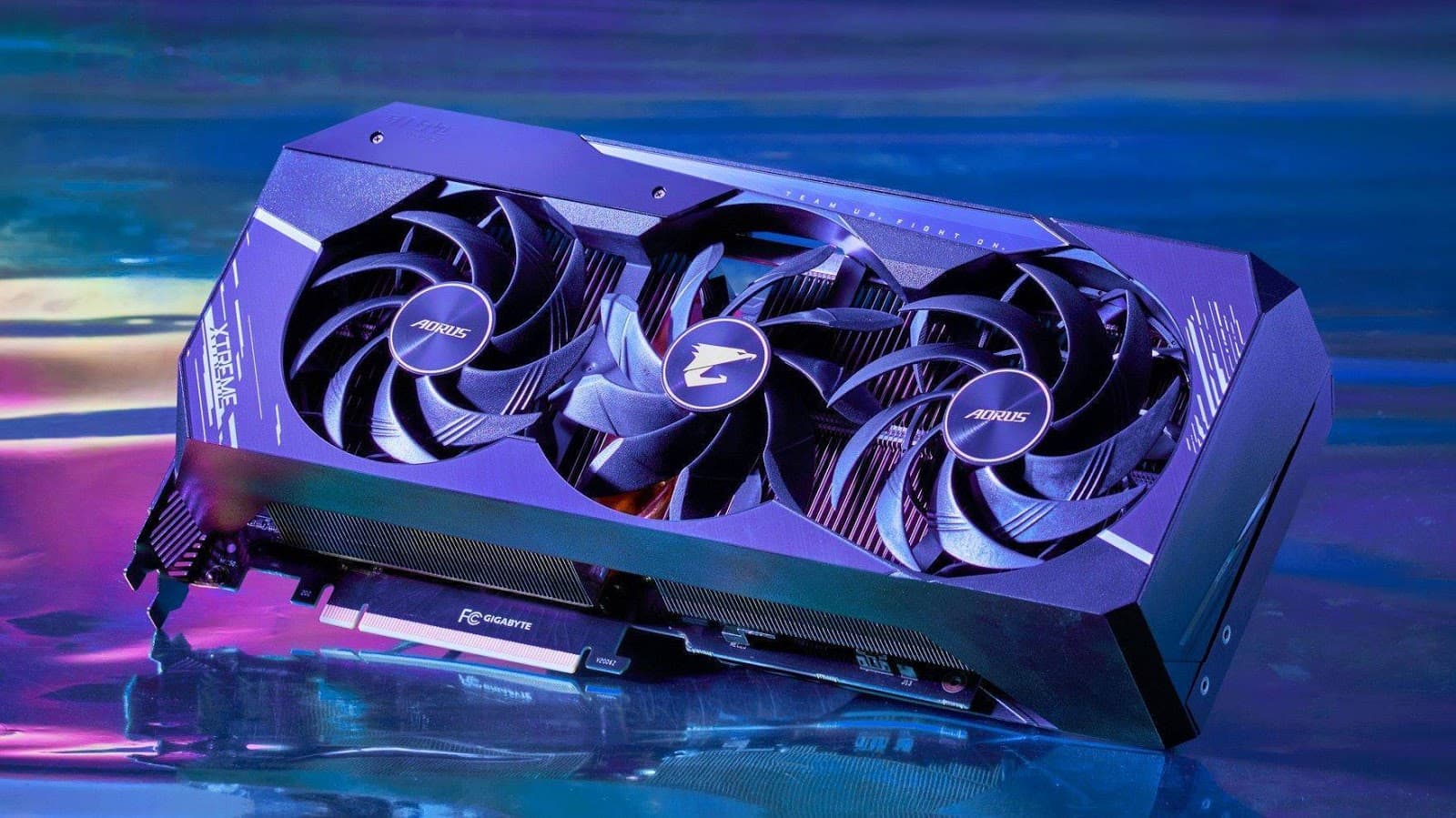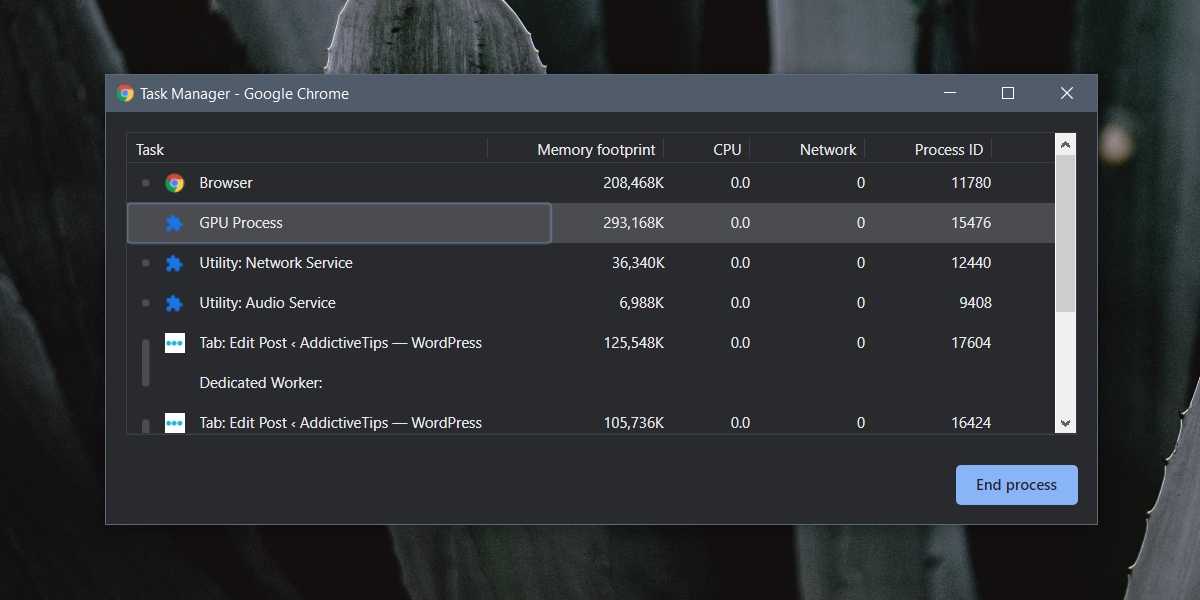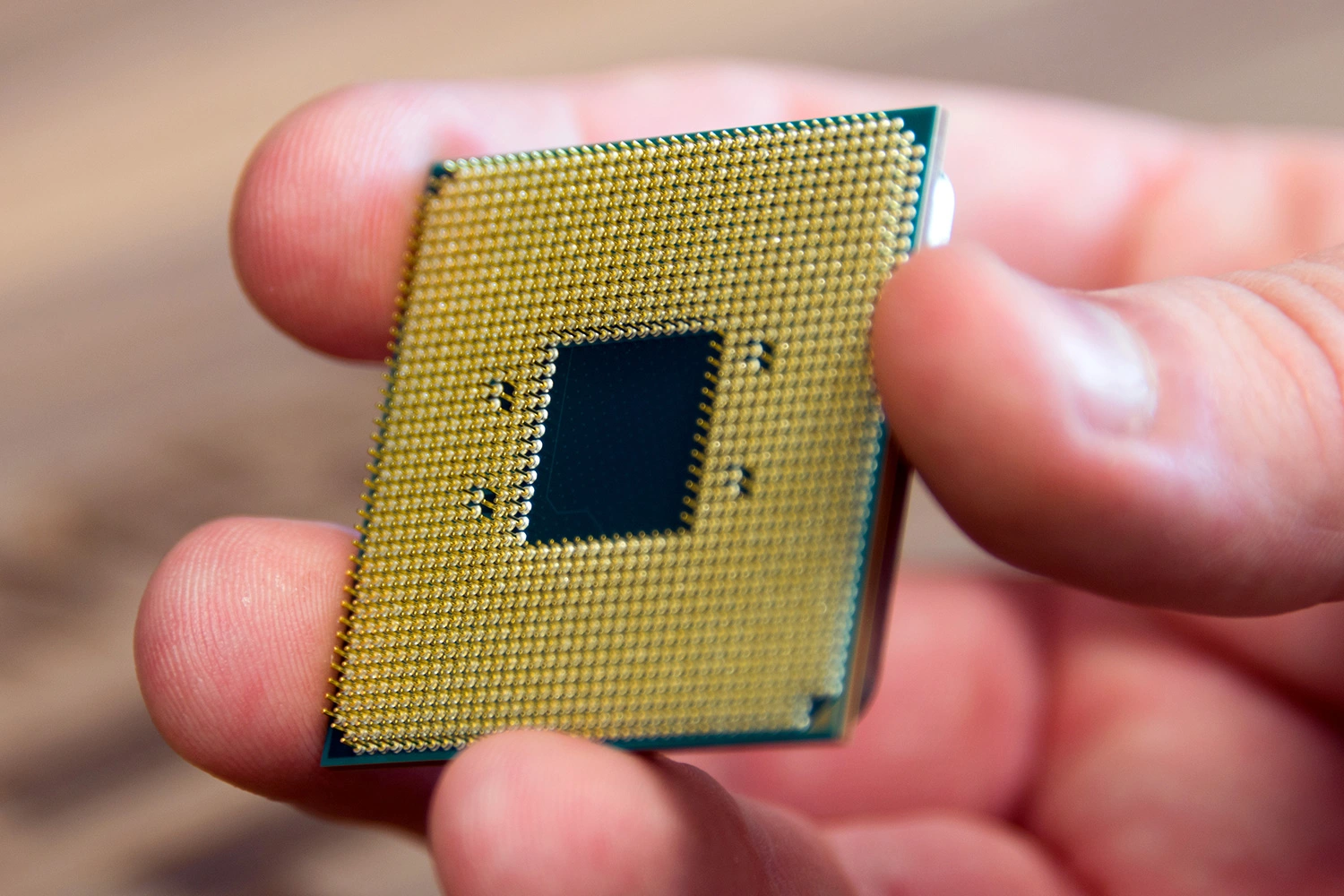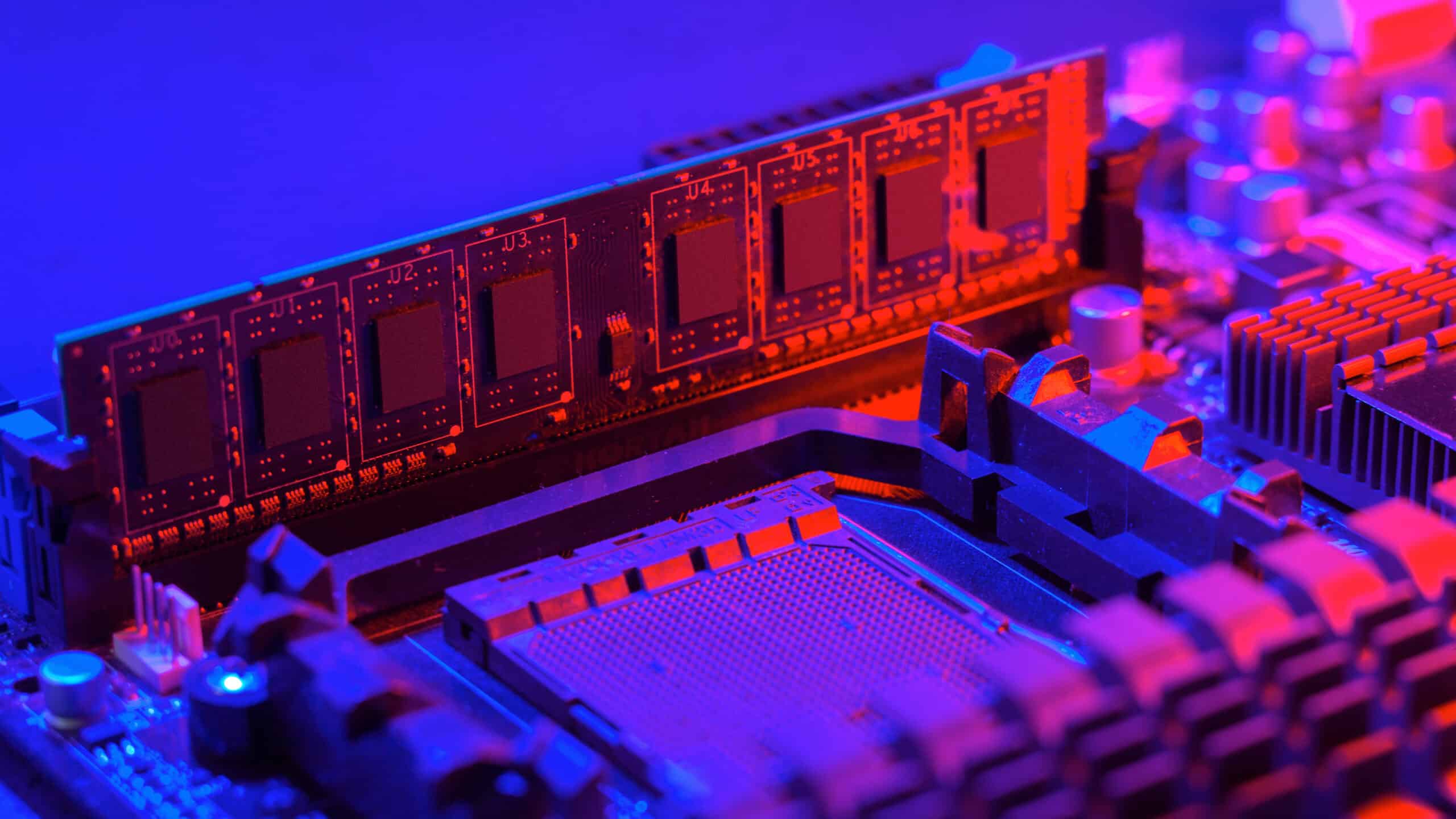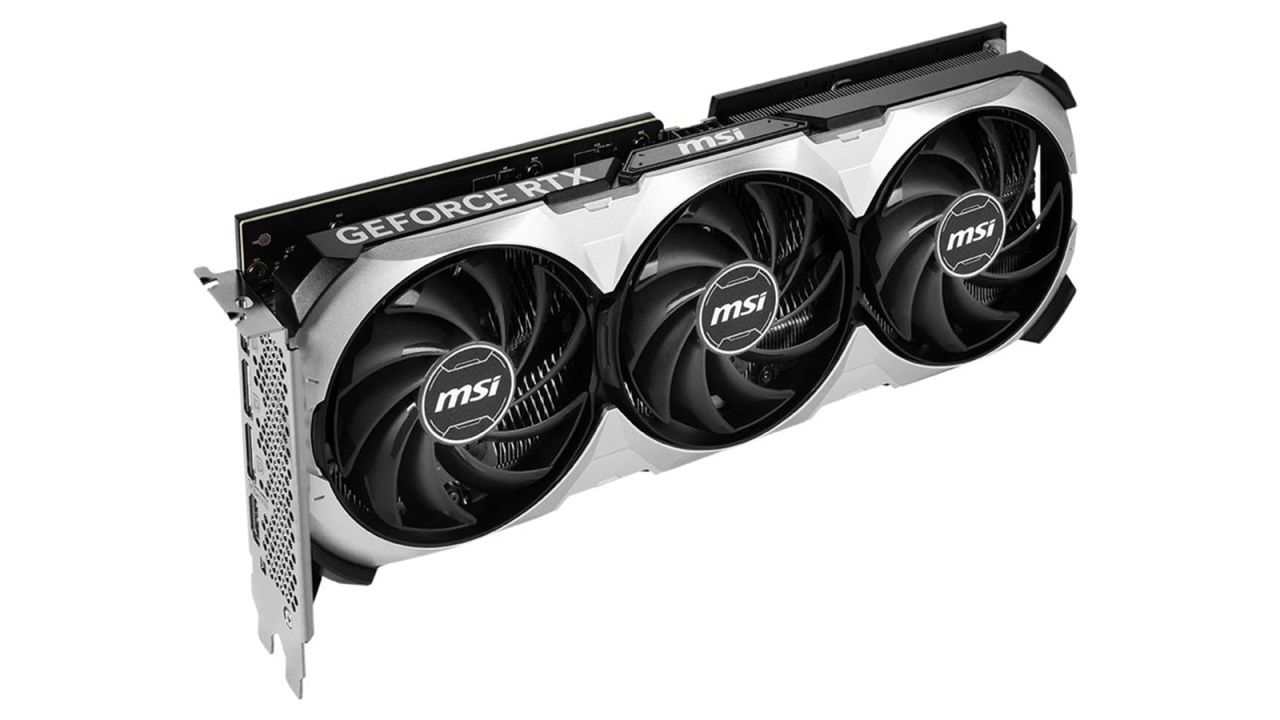Introduction
The interconnectedness of computer hardware components is vital in enabling them to work together efficiently. Two integral components that work in tandem to power modern computing devices are the CPU (Central Processing Unit) and the GPU (Graphics Processing Unit). These processing units are crucial for executing various tasks and delivering exceptional performance.
In this article, we will explore how the CPU and GPU collaborate to enhance the overall computing experience. We will delve into understanding the roles of each unit, highlight the key differences, explore their synchronization, and discuss the benefits of their collaboration. Furthermore, we will examine real-life examples of how the CPU and GPU work together in different fields.
Understanding the intricate workings of the CPU and GPU is essential not only for technology enthusiasts but for anyone aiming to optimize their computing performance. Whether you are a gamer, a data scientist, or simply an everyday user, having a grasp of these components can help you make informed decisions when it comes to selecting a device that caters to your specific needs.
By the end of this article, you will have a comprehensive understanding of how the CPU and GPU work in tandem to deliver the impressive computing power that we experience every day. So, let’s dive in and explore the fascinating world of CPU and GPU collaboration!
What is a CPU?
The CPU, or Central Processing Unit, is often referred to as the “brain” of a computer. It is responsible for executing instructions and performing calculations necessary for the functioning of the system. The CPU consists of various components, including the control unit, arithmetic logic unit (ALU), and cache memory.
The control unit retrieves instructions from the computer’s memory and decodes them, determining what actions the CPU needs to perform. The ALU handles mathematical and logical operations, such as addition, subtraction, multiplication, and comparison. The cache memory stores frequently accessed data, allowing for faster retrieval and improved overall performance.
The CPU operates by following a set of instructions stored in memory, commonly referred to as a program. It fetches these instructions, decodes them, performs the necessary operations, and stores the results back in memory. This process occurs repeatedly, allowing the CPU to execute instructions in a sequential manner.
The processing power of a CPU is determined by factors such as clock speed, the number of cores, cache size, and architecture. Clock speed refers to how many calculations the CPU can perform in a given time frame, typically measured in gigahertz (GHz). Cores are individual processing units within the CPU, and more cores allow for parallel processing, enabling the CPU to handle multiple tasks simultaneously.
The CPU’s primary role is to handle general-purpose tasks that require complex calculations and rapid decision-making. It executes instructions related to operating system operations, software applications, and managing various hardware components. Tasks such as running programs, performing mathematical calculations, handling system requests, and managing memory allocation all fall under the responsibilities of the CPU.
In summary, the CPU is the central component that carries out the instructions necessary for a computer to function. It performs calculations, manages system operations, and coordinates the activities of all other hardware components. Without the CPU, a computer would be unable to execute any tasks or process data.
What is a GPU?
A GPU, or Graphics Processing Unit, is a specialized electronic circuit that is primarily designed to handle and accelerate the rendering of images, videos, and animations. Originally developed to cater to the demands of graphics-intensive applications, GPUs have evolved to become powerful processors capable of handling complex calculations with incredible speed and efficiency.
Unlike the CPU, which focuses on general-purpose computing tasks, the GPU is specifically optimized for parallel processing. It consists of thousands of smaller processing cores, each capable of executing multiple operations simultaneously. This parallel architecture enables GPUs to perform massive amounts of calculations in parallel, making them highly efficient for tasks that involve large datasets and heavy computational requirements.
The GPU’s impressive computational power and architecture make it an ideal candidate for tasks beyond graphics rendering. It is increasingly being utilized in fields such as machine learning, scientific simulations, cryptocurrency mining, and video encoding. These applications benefit greatly from the GPU’s ability to perform thousands of calculations simultaneously, significantly reducing processing time.
Another key feature of GPUs is their dedicated memory, known as VRAM (Video Random Access Memory). This high-speed memory allows the GPU to store and access graphical data quickly, enabling smooth graphics rendering and reduced latency. The amount of VRAM on a GPU determines its ability to handle large textures, complex scenes, and high-resolution displays.
With the rise of gaming and the increasing demand for realistic visuals, GPUs have become an integral part of modern gaming systems. They handle tasks such as rendering textures, shadows, and reflections, ensuring smooth gameplay and immersive graphics. In gaming, the GPU works closely with the CPU to deliver a seamless gaming experience, with the CPU handling tasks such as physics simulations and AI computations.
In summary, a GPU is a specialized processor designed to accelerate graphics rendering and perform highly parallel computing tasks. Its architectural design, large number of processing cores, and dedicated memory make it an indispensable component for tasks involving complex calculations and graphics-intensive applications. The GPU’s versatility and scalability have led to its adoption in various fields, revolutionizing industries that demand high-performance computing.
CPU vs GPU: Key Differences
While both the CPU and GPU are essential components of a computing system, they have distinct differences in terms of architecture, functionality, and the types of tasks they excel at performing. Understanding these differences is crucial in harnessing the full potential of each unit in various applications.
One of the primary differences between the CPU and GPU lies in their architectural design. The CPU typically consists of a few cores, which excel at executing sequential tasks in a single-threaded manner. These cores are optimized for tasks that require high single-threaded performance, such as operating system operations, software applications, and general-purpose computing.
On the other hand, the GPU boasts thousands of smaller, more specialized cores. This parallel architecture allows the GPU to handle numerous calculations simultaneously, making it exceptionally efficient for highly parallel tasks. GPUs excel at tasks that involve massive data processing, such as graphics rendering, machine learning algorithms, scientific simulations, and cryptocurrency mining.
Another key distinction is the type of memory utilized by each unit. CPUs typically employ fast cache memory with low capacity to store frequently accessed data. This cache memory helps reduce latency and improve overall performance. In contrast, GPUs utilize dedicated video memory (VRAM) with larger capacities to accommodate the vast amount of graphical data required for rendering detailed images and videos.
Clock speed is another notable difference between the CPU and GPU. CPUs typically operate at higher clock speeds due to their focus on sequential tasks and single-threaded performance. In contrast, GPUs have lower clock speeds but make up for it with a much higher number of cores. This allows GPUs to make significant strides in parallel processing and handle computations efficiently despite the relatively lower clock speeds.
When it comes to power consumption, CPUs tend to be more power-hungry compared to GPUs. CPUs are designed to handle a wide range of tasks, including power-intensive programs, resulting in higher power requirements. GPUs, on the other hand, are optimized for parallel computations, which can be performed more efficiently and with lower power consumption.
In summary, the key differences between the CPU and GPU lie in their architecture, functionality, memory usage, clock speeds, and power consumption. Understanding these distinctions is crucial in determining which unit to utilize for specific tasks. While CPUs excel at sequential tasks and general-purpose computing, GPUs shine in highly parallel and data-intensive applications, such as graphics rendering, machine learning, and scientific simulations.
The Role of the CPU
The CPU, or Central Processing Unit, plays a critical role in the overall functioning of a computer system. Often referred to as the “brain” of a computer, the CPU is responsible for executing instructions, performing calculations, and coordinating various hardware components. Let’s explore the key roles and responsibilities of the CPU in more detail.
One of the primary functions of the CPU is to handle general-purpose tasks. It executes instructions related to operating system operations, software applications, and coordinating various hardware components. Whether you’re browsing the web, editing documents, or running complex software, all of these tasks are managed and performed by the CPU.
The CPU acts as the control center of the computer system. It fetches instructions from the computer’s memory and decodes them, determining what actions the CPU needs to perform. The instruction set architecture (ISA) of the CPU defines the specific instructions it can execute. Common ISAs include x86, ARM, and PowerPC.
Another crucial role of the CPU is in managing system resources. It allocates memory, schedules tasks, and ensures that different programs and processes run smoothly without interference. The CPU coordinates the data flow between different components, such as the RAM (Random Access Memory), storage devices, and input/output interfaces, to facilitate efficient data transfer and processing.
The CPU also plays a vital role in performing mathematical and logical operations. The arithmetic logic unit (ALU), a component of the CPU, handles mathematical calculations, such as addition, subtraction, multiplication, and division. It also performs logical operations, such as comparisons and bitwise operations.
In addition to general-purpose tasks, the CPU is responsible for managing system requests and handling input/output operations. This includes tasks such as reading and writing data to storage devices, sending and receiving data over networks, and managing peripheral devices like keyboards and mice.
The performance of a CPU is influenced by various factors. Clock speed, measured in gigahertz (GHz), refers to the number of calculations the CPU can perform in a given time frame. A higher clock speed generally results in faster processing. The number of cores within a CPU also affects its performance. Having multiple cores allows for parallel processing, enabling the CPU to handle multiple tasks simultaneously.
In summary, the CPU plays a central role in managing and executing instructions necessary for a computer to function. It handles general-purpose tasks, manages system resources, performs mathematical and logical operations, and facilitates data transfer and input/output operations. The CPU’s performance is influenced by factors such as clock speed, the number of cores, and its ability to manage system resources effectively. Without the CPU, a computer would be unable to execute any tasks or process data.
The Role of the GPU
The GPU, or Graphics Processing Unit, plays a crucial role in handling graphics-intensive tasks, accelerating image rendering, and enabling smooth visual experiences. Originally designed for graphics-related applications, the GPU has evolved into a powerful processor capable of executing complex calculations with remarkable speed. Let’s explore the key roles and responsibilities of the GPU in more detail.
The primary role of the GPU is to handle the rendering of images, videos, and animations. It is optimized for parallel processing, with thousands of smaller processing cores working together to perform calculations simultaneously. This parallel architecture allows the GPU to process large amounts of data quickly and efficiently, making it especially effective in graphics-intensive tasks.
Graphics rendering involves tasks such as rendering textures, shadows, reflections, and complex visual effects in real-time. The GPU’s specialized architecture and high-performance capabilities make it well-suited to handle these tasks. Without a powerful GPU, the rendering of detailed and lifelike graphics would be significantly slower and less realistic.
In addition to graphics rendering, the GPU’s parallel processing capabilities have made it increasingly indispensable in various computational applications. It is commonly utilized in fields such as machine learning, where complex mathematical calculations are performed on vast datasets. The GPU’s ability to process data in parallel allows for faster training and inference times in machine learning models.
Cryptocurrency mining is another area where the GPU’s computational power has found significant utility. Mining involves solving highly complex mathematical calculations, and the parallel architecture of the GPU enables miners to perform these calculations at a much faster rate. Mining cryptocurrency using a GPU can be significantly more efficient than using a CPU alone.
The GPU also plays a crucial role in enhancing gaming experiences. It handles tasks such as rendering high-resolution textures, shading, and real-time physics simulations, resulting in visually stunning and immersive gaming environments. The GPU works in tandem with the CPU, with the CPU handling tasks like AI computations and physics simulations while the GPU focuses on graphics rendering.
Moreover, the GPU’s dedicated video memory (VRAM) allows for smoother and quicker access to graphical data. This high-speed memory alleviates bottlenecks and reduces latency during graphics rendering, resulting in a more seamless gaming experience and faster data transfers.
In summary, the GPU is a specialized processor designed to accelerate graphics rendering and handle highly parallel computing tasks. Its primary role is to render images, videos, and animations with speed and precision. Beyond graphics, the GPU’s parallel processing capabilities have found applications in various fields such as machine learning and cryptocurrency mining. Additionally, it enhances gaming experiences by delivering realistic visuals and smooth gameplay. The GPU’s dedicated memory further contributes to its performance and efficiency.
How Do CPU and GPU Work Together?
The CPU and GPU are integral components of a computing system, and they work together to deliver optimal performance and efficiency. While each unit has its own distinct responsibilities and capabilities, their collaboration is vital in achieving seamless computing experiences. Let’s explore how the CPU and GPU work together in harmony.
In most computing systems, the CPU acts as the primary processing unit, handling general-purpose tasks such as running software applications, managing system resources, and performing complex calculations. It executes instructions, manages memory, and coordinates various hardware components. The CPU’s primary focus is on single-threaded tasks that require high single-core performance.
On the other hand, the GPU specializes in performing highly parallel tasks, primarily related to graphics rendering. It excels at simultaneously processing large amounts of data and executing calculations across thousands of smaller processing cores. The GPU’s architecture and processing power make it ideal for tasks that involve complex graphics rendering, machine learning algorithms, and scientific simulations that require massive parallel computing.
The collaboration between the CPU and GPU typically occurs in scenarios where parallel processing and graphics rendering are involved. In gaming, for example, the CPU offloads tasks such as physics simulations and AI computations to the GPU, which excels in parallel processing. This division of labor allows the CPU to focus on managing the game logic and other system-level operations, while the GPU handles the rendering of high-quality graphics in real-time.
To work together efficiently, the CPU and GPU need to synchronize their activities. This synchronization involves tasks such as data transfer between the CPU and GPU memory, coordinating instructions, and ensuring efficient utilization of resources. Various programming frameworks and APIs, like DirectX and OpenGL, facilitate the communication and synchronization between the CPU and GPU, enabling them to work together seamlessly.
Data transfer between the CPU and GPU occurs through buffers or shared memory. The CPU prepares and transfers data to the GPU memory, where the GPU processes the data and performs the necessary calculations. Upon completion, the GPU sends the results back to the CPU for further processing or display. This bidirectional data flow enables efficient collaboration between the CPU and GPU.
The CPU and GPU also collaborate in parallel computing applications. For example, in machine learning, the CPU handles tasks such as data preprocessing, model management, and handling input/output operations. The GPU, with its parallel processing prowess, performs the computationally intensive tasks involved in training and inference of machine learning models. The CPU and GPU work in tandem, leveraging each other’s strengths to accelerate the overall machine learning workflow.
In summary, the CPU and GPU work together by harnessing their respective strengths to achieve optimal performance and efficiency. The CPU handles general-purpose tasks, manages system resources, and coordinates various hardware components. The GPU excels at parallel processing and graphics rendering. Their collaboration is achieved through synchronization, data transfer, and task offloading, resulting in enhanced graphics rendering, faster computational performance, and seamless computing experiences across a wide range of applications.
CPU and GPU Synchronization
Synchronization between the CPU and GPU is crucial for efficient collaboration and optimal performance. It involves coordination, data transfer, and ensuring that both units work together seamlessly to deliver the desired outcome. Let’s explore how CPU and GPU synchronization is achieved and its significance in various computing scenarios.
One of the key aspects of CPU and GPU synchronization is data transfer. The CPU and GPU need to exchange data efficiently to ensure smooth collaboration. Buffer objects or shared memory are commonly used as intermediate storage for data transfer. The CPU prepares the data and transfers it to the GPU memory for processing. Once the GPU finishes the calculations, it sends the results back to the CPU for further processing or rendering.
Programming frameworks and APIs play a significant role in facilitating synchronization between the CPU and GPU. APIs like DirectX, OpenGL, and OpenCL provide the necessary tools and functions to allow the CPU and GPU to communicate with each other effectively. These frameworks enable developers to write code that utilizes both the CPU and GPU resources in a synchronized manner.
Synchronization is particularly important in graphics rendering applications. The CPU and GPU need to work together to ensure that the rendered frames are displayed smoothly and in-sync with other elements of the system. This coordination involves ensuring that the CPU provides the necessary instructions and data to the GPU in a timely manner, allowing the GPU to render the frames at the desired frame rate.
In addition to graphics rendering, synchronization is crucial in parallel computing applications as well. For example, in machine learning, the CPU and GPU need to synchronize during training and inference processes. The CPU manages data preprocessing, model management, and task scheduling, while the GPU performs the compute-intensive operations. Effective synchronization ensures that the CPU provides the right data and instructions to the GPU, allowing it to perform the calculations efficiently.
Efficient synchronization techniques also help in reducing unnecessary delays and latency. This is achieved through overlapping operations and minimizing idle time for the CPU and GPU. Techniques like double buffering or pipelining can be employed to maximize the utilization of both units by allowing them to work on different tasks simultaneously.
Finally, synchronization also involves efficient memory management and resource allocation between the CPU and GPU. Both units share system memory, VRAM, and other resources. Synchronization ensures that the memory is allocated optimally, avoiding conflicts and contention. Proper management of shared resources improves overall system performance and reduces bottlenecks during data transfer and processing.
In summary, synchronization between the CPU and GPU is essential for efficient collaboration and optimal performance. It involves data transfer, coordination, and resource management. Programming frameworks and APIs facilitate communication between the CPU and GPU. Synchronization is crucial in graphics rendering, parallel computing, and other computationally intensive applications. Efficient synchronization techniques enhance performance and reduce delays, enabling the CPU and GPU to work together seamlessly and deliver outstanding results.
Benefits of CPU and GPU Collaboration
The collaboration between the CPU and GPU in a computing system yields numerous benefits, enhancing overall performance and enabling a wide range of applications. By leveraging the unique strengths of each unit, the CPU and GPU work together to deliver exceptional computational power and efficient execution. Let’s explore some of the key benefits of CPU and GPU collaboration.
One of the major advantages of CPU and GPU collaboration is the ability to handle diverse workloads. The CPU is proficient in handling general-purpose tasks such as running software applications, managing system resources, and performing complex calculations. On the other hand, the GPU excels at parallel processing, making it ideal for graphics rendering, machine learning algorithms, and scientific simulations. By working together, the CPU and GPU ensure that different types of tasks are delegated to the appropriate unit, maximizing efficiency and overall performance.
Combining the CPU and GPU’s processing power can lead to significant performance gains. Parallel tasks, such as graphics rendering or large-scale data processing, can be effectively offloaded to the GPU, freeing up the CPU to focus on other tasks. This parallel processing capability allows for faster execution of computationally intensive operations, resulting in reduced processing times and improved productivity.
Graphics-related applications, such as gaming or video editing, benefit greatly from CPU and GPU collaboration. The CPU, with its strong single-threaded performance, handles tasks like physics simulations, AI computations, and managing game logic. Simultaneously, the GPU focuses on rendering high-quality graphics, ensuring fluid animations, realistic lighting effects, and immersive visual experiences. This collaboration enables gamers and content creators to enjoy smooth gameplay and achieve stunning visual quality.
In the field of machine learning, CPU and GPU collaboration is instrumental in training and inference processes. The CPU handles data preprocessing, model management, and coordination, while the GPU performs the computationally intensive operations required for training and prediction. By working synergistically, the CPU and GPU accelerate the training process, reduce inference times, and enable the development of more sophisticated machine learning models.
Another benefit of CPU and GPU collaboration is energy efficiency. CPUs are typically power-hungry units that excel at handling a wide range of tasks. By offloading parallel tasks to the GPU, the CPU’s workload is reduced, resulting in lower power consumption. The GPU, optimized for parallel processing, delivers excellent computational performance while consuming relatively less power. This collaboration contributes to more efficient energy usage and can lead to overall energy savings in high-performance computing environments.
In summary, the collaboration between the CPU and GPU offers numerous benefits, including the ability to handle diverse workloads, improved performance, enhanced graphics rendering, accelerated machine learning processes, and energy efficiency. By leveraging their unique strengths and capabilities, the CPU and GPU work together seamlessly, enabling a wide range of applications and delivering exceptional computing experiences.
Examples of CPU and GPU Cooperation in Various Fields
The collaboration between the CPU and GPU has revolutionized numerous fields, enabling breakthroughs in various applications. By working together, these computing units have opened up new possibilities and improved performance in fields such as gaming, scientific research, artificial intelligence, and more. Let’s explore some examples of CPU and GPU cooperation in different domains.
In gaming, CPU and GPU collaboration is critical for providing immersive experiences and realistic graphics. The CPU handles tasks such as game logic, physics simulations, and AI computations, while the GPU focuses on rendering high-resolution textures, lighting effects, and shadows in real-time. This collaboration ensures smooth animations, accurate physics interactions, and visually stunning environments, enhancing the overall gaming experience.
In the field of scientific research and simulations, CPU and GPU cooperation enables faster data analysis and simulation. Complex scientific calculations, such as weather modeling, fluid dynamics, or molecular dynamics, require massive computational power. The CPU manages data processing, sets up simulations, and controls the overall workflow, while the GPU performs the computationally intensive calculations in parallel. This cooperation accelerates research progress and empowers scientists to gain insights from vast and complex datasets.
GPU acceleration is widely used in artificial intelligence (AI) applications. Training deep learning models on large datasets demands significant computational power. CPUs are responsible for managing the training pipeline, data preprocessing, and model management, while GPUs perform highly parallel computations during the training process. The parallel architecture of the GPU allows for faster training, enabling the development of more sophisticated and accurate AI models.
The collaboration between the CPU and GPU also plays a crucial role in video editing and production. The CPU handles tasks like managing video data, applying effects, and synchronizing audio and video streams. Meanwhile, the GPU takes charge of real-time video rendering, color grading, and effects processing. This cooperation enhances video editing workflows by accelerating rendering times and enabling fluid playback of high-resolution content.
Another domain where CPU and GPU cooperation is invaluable is medical imaging. Tasks such as MRI (Magnetic Resonance Imaging) or CT (Computed Tomography) scans require heavy computational processing for image reconstruction. The CPU manages data acquisition, handling patient information, and controlling the scanning process, while the GPU performs computationally intensive tasks, such as image reconstruction and rendering. This collaboration enables faster image processing, leading to more efficient diagnosis and better patient care.
In the field of cryptocurrency mining, CPUs and GPUs work together to perform complex computations required for mining operations. CPUs handle general-purpose tasks, manage the mining process, and coordinate overall system operations. GPUs, with their parallel processing capabilities, perform the computationally intensive calculations necessary for mining cryptocurrencies. This collaboration allows miners to extract digital currencies efficiently and maximize their mining capabilities.
In summary, CPU and GPU collaboration has had a profound impact on various fields. In gaming, scientific research, AI, video editing, medical imaging, and cryptocurrency mining, the cooperation between these units has enabled faster computations, realistic graphics, improved workflows, and breakthrough discoveries. By leveraging the strengths of both CPUs and GPUs, professionals and enthusiasts in these fields can push boundaries, innovate, and achieve remarkable results.
Conclusion
The collaboration between the CPU and GPU is essential for the optimal functioning and performance of modern computing devices. While the CPU serves as the “brain” of the system, handling general-purpose tasks and managing system operations, the GPU specializes in parallel processing and graphics rendering. By harnessing the strengths of both units, a wide range of applications can benefit from their combined power and efficiency.
The CPU and GPU work together seamlessly in various fields, such as gaming, scientific research, artificial intelligence, video editing, medical imaging, and cryptocurrency mining. In gaming, their collaboration enables realistic visuals, fluid animations, and immersive gameplay experiences. In scientific research, they accelerate data analysis and complex simulations, leading to breakthrough discoveries. In AI, their cooperation facilitates faster model training and more accurate predictions. In video editing, their collaboration enhances rendering times and high-resolution content playback. In medical imaging, their cooperation enables faster image processing and more efficient diagnosis. And in cryptocurrency mining, their collaboration maximizes mining capabilities and efficiency.
The synchronization between the CPU and GPU is crucial for their collaboration. Programming frameworks and APIs facilitate communication and data transfer between the units, allowing them to work together efficiently. Efficient synchronization techniques minimize latency, overlap operations, and optimize resource allocation, further enhancing their cooperation.
The benefits of CPU and GPU collaboration are far-reaching. It allows for handling diverse workloads, improving performance, enhancing graphics rendering, accelerating machine learning processes, and achieving energy efficiency. By leveraging the unique strengths of the CPU and GPU, computing devices can deliver exceptional computational power and efficiency for a wide variety of applications.
In conclusion, the collaboration between the CPU and GPU is a fundamental pillar of modern computing. Their synergy enables the execution of complex tasks, realistic graphics, and efficient parallel processing. As technology advances, the collaboration between the CPU and GPU will continue to drive innovation, empower various fields, and push the boundaries of what is possible in computing.







